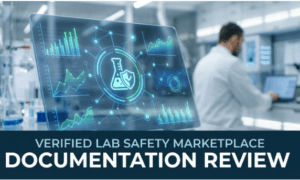Welcome to the digital age, where technology has revolutionized every aspect of our lives – including education. With the rise of EdTech (Educational Technology), learning has never been more interactive and engaging. Gone are the days of boring textbooks and monotonous lectures; now, students can immerse themselves in a world filled with endless possibilities for knowledge acquisition. In this blog post, we will dive into the incredible benefits that EdTech brings to the table, exploring how it enhances learning and prepares us for success in an ever-evolving digital society. Join us on this exciting journey as we uncover the power of EdTech and discover why it is shaping the future of education!
Introduction to EdTech and its role in education
EdTech, short for Education Technology, refers to the use of digital tools and resources to enhance teaching and learning processes. With the rise of technology and its integration into every aspect of our lives, it is no surprise that the field of education has also been greatly impacted by it. EdTech has revolutionized traditional classroom settings and opened up new avenues for educators to engage with students.
One of the key roles of EdTech in education is to bridge the gap between traditional teaching methods and modern learning styles. In today’s digital age, students are constantly exposed to technology in their everyday lives, making them more receptive to learning through digital platforms. By incorporating EdTech tools such as interactive videos, virtual reality simulations, online quizzes, and games, educators can create a more engaging learning experience for students.
Another crucial role of EdTech is its ability to personalize learning for each student. With the help of data analytics software, teachers can track individual student progress and cater their lesson plans accordingly. This allows students to learn at their own pace and focus on areas where they need improvement. Moreover, adaptive learning programs use algorithms to adjust content based on a student’s responses, providing personalized feedback and recommendations for further study.
Furthermore, EdTech has made education more accessible than ever before. Online courses, webinars, virtual classrooms have made it possible for individuals from all over the world to access quality education without any geographical barriers. This not only provides equal opportunities for all but also
Advantages of using EdTech in the classroom
There are numerous benefits to incorporating EdTech (Educational Technology) in the classroom, providing students with access to a wide range of digital tools and resources. In this section, we will delve into some of the main advantages of using EdTech in the classroom.
1. Personalized learning experience:
One of the key advantages of EdTech is that it allows for a more personalized learning experience for students. With the help of various educational software and online platforms, teachers can create customized lesson plans and assignments tailored to meet individual student needs. This not only caters to different learning styles but also helps students learn at their own pace, leading to better retention and understanding.
2. Improved engagement:
Traditional teaching methods may not always capture the attention or interest of all students. However, with interactive and visually appealing EdTech tools such as videos, games, simulations, etc., teachers can make lessons more engaging and captivating for their students. This leads to increased motivation and participation from students, ultimately resulting in a deeper understanding of concepts.
3. Accessible anytime, anywhere:
EdTech eliminates the limitations posed by physical classrooms and textbooks by making education accessible anytime and anywhere with an internet connection. Students can access course materials on laptops or mobile devices, allowing them to continue their learning outside of school hours or even when they are at home sick.
4. Enhances critical thinking skills:
EdTech encourages students to think critically as they navigate through various digital resources while completing tasks or projects assigned by their teachers. By analyzing information
How EdTech can enhance teaching and learning
EdTech, or educational technology, is the use of technology and digital tools to enhance teaching and learning experiences. In today’s fast-paced digital age, it has become increasingly important for educators to incorporate EdTech into their lessons in order to keep up with the constantly evolving world and engage students in new and innovative ways.
One of the primary benefits of EdTech is its ability to cater to different learning styles. Every student has a unique way of processing information and retaining knowledge, and traditional teaching methods may not always be effective for every student. With EdTech, teachers can utilize various tools such as videos, interactive activities, virtual simulations, and games to present information in a more engaging and personalized manner. This allows students to learn at their own pace and in a way that best suits their individual needs.
Another advantage of using EdTech is that it can make learning more accessible. In traditional classroom settings, students are limited by time and location constraints. However, with the help of technology, students can access educational materials anytime and anywhere as long as they have an internet connection. This opens up endless opportunities for distance learning, which is especially beneficial for students who may not have access to quality education due to geographical barriers or physical disabilities.
Moreover, EdTech also fosters collaboration among students. Many digital tools allow for easy communication between peers from different locations through features such as virtual classrooms or online discussion forums. This enables students to work together on projects and assignments regardless of their physical location. Collaborative learning not only
Case studies of successful implementation of EdTech
EdTech, or educational technology, has been gaining popularity in recent years as schools and educators recognize its potential to enhance learning experiences for students. While the concept of using technology in education is not new, the advancements made in EdTech have opened up a world of possibilities for teachers and students alike.
One way to truly understand the impact of EdTech is by looking at real-life case studies where it has been successfully implemented. These success stories serve as inspiration and proof that when used effectively, EdTech can bring about significant improvements in student learning outcomes.
Here are some notable case studies that showcase the successful implementation of EdTech:
1. The Khan Academy – This online platform was founded by educator Salman Khan with the aim of providing free education to anyone, anywhere. By utilizing videos, interactive exercises, and personalized learning tools, Khan Academy has revolutionized math education and helped millions of students improve their understanding and performance in this subject.
2. Duolingo – With over 300 million users worldwide, Duolingo has become one of the most popular language-learning platforms. It offers a fun and gamified approach to learning languages through its mobile app and website. The success of Duolingo lies in its use of adaptive algorithms that personalize lessons based on each user’s progress.
3. Summit Learning Program – This program uses a combination of digital curriculum, project-based learning activities, and mentoring from teachers to create a personalized learning experience for students. In a study conducted by Harvard researchers, it was found that schools
Challenges and limitations of EdTech in education
The integration of technology in education, also known as EdTech, has become increasingly prevalent in classrooms around the world. With advancements in technology and its widespread availability, it has become a valuable tool for enhancing learning experiences. However, like any new development, there are challenges and limitations to consider when implementing EdTech in education.
One of the major challenges of EdTech is access and equity. While technology has become more affordable and accessible over the years, not all students have equal access to devices or reliable internet connection. This can create a digital divide where some students have an advantage over others when it comes to utilizing EdTech tools for learning.
Additionally, schools located in low-income areas may not have the budget to invest in expensive devices or software, further limiting access to educational resources.
Another challenge is teacher training and readiness. Many teachers who have been teaching for several years may not be fully familiar with incorporating technology into their lessons. This lack of knowledge can lead to resistance towards using EdTech or using it ineffectively. Proper training and support are essential for teachers to feel confident and comfortable integrating technology into their teaching methods.
The constant evolution of technology also poses a challenge for schools and educators. With new devices, software updates, and apps constantly being developed, it can be challenging to keep up with the latest trends and determine which ones are most suitable for educational purposes. This can result in outdated or ineffective use of EdTech tools if schools do not regularly update their equipment or provide ongoing professional development opportunities for
The future of EdTech and its potential impact on education
The future of EdTech (Educational Technology) is a topic that has been gaining a lot of attention in recent years. With the rapid advancements in technology, it is clear that the education sector will also witness significant changes in the way students learn and teachers teach. In this section, we will explore some potential impacts that EdTech could have on education in the future.
1. Personalized Learning Experience:
One of the most significant benefits of EdTech is its ability to personalize learning for every student. With advanced learning algorithms and data analytics, EdTech platforms can cater to each student’s individual needs and provide personalized learning paths. This means that students can learn at their own pace and focus on areas they need to improve upon, ultimately leading to better academic outcomes.
2. Increased Accessibility:
The use of EdTech also has the potential to increase accessibility for students from all backgrounds. Online learning platforms eliminate barriers such as location, time constraints, and physical disabilities that may hinder traditional classroom-based education. This level playing field enables students from different socio-economic backgrounds to access quality education, closing the gap between those who have access to educational resources and those who do not.
3. Enhanced Collaboration:
EdTech tools are designed with collaboration in mind, making it easier for students to work together on projects or assignments regardless of their physical location. Real-time communication features such as video conferencing, chat rooms, and discussion forums allow students to interact with their peers and engage in meaningful discussions about course material. This fosters
Conclusion: Embracing the digital age in education with EdTech.
It is clear that EdTech has numerous benefits and plays a crucial role in enhancing learning in the digital age. As technology continues to advance and become an integral part of our daily lives, it is essential for education to keep up with these changes. By embracing EdTech, we can create a more effective and efficient learning environment for students.
One of the key advantages of using EdTech in education is its ability to enhance engagement and motivation among students. Traditional methods of teaching often rely on textbooks and lectures, which can be monotonous for students. However, with the use of interactive tools such as educational games, simulations, and virtual reality experiences, students are more engaged in their learning process. This leads to increased motivation and interest in the subject matter.
Moreover, EdTech allows for personalized learning experiences tailored to each student’s needs and abilities. With various online platforms that offer adaptive learning programs or AI-powered tutoring systems, students can receive individualized instruction based on their strengths and weaknesses. This not only improves academic performance but also boosts self-confidence as students feel supported in their learning journey.
Another significant benefit of using EdTech is its accessibility. With digital devices becoming more affordable and internet access growing globally, students from all backgrounds can access educational resources online. This breaks down barriers to education such as geographical location or socio-economic status. Additionally, EdTech also provides opportunities for distance learning or remote education, making education more inclusive for those who may not have access to traditional classroom settings.



































